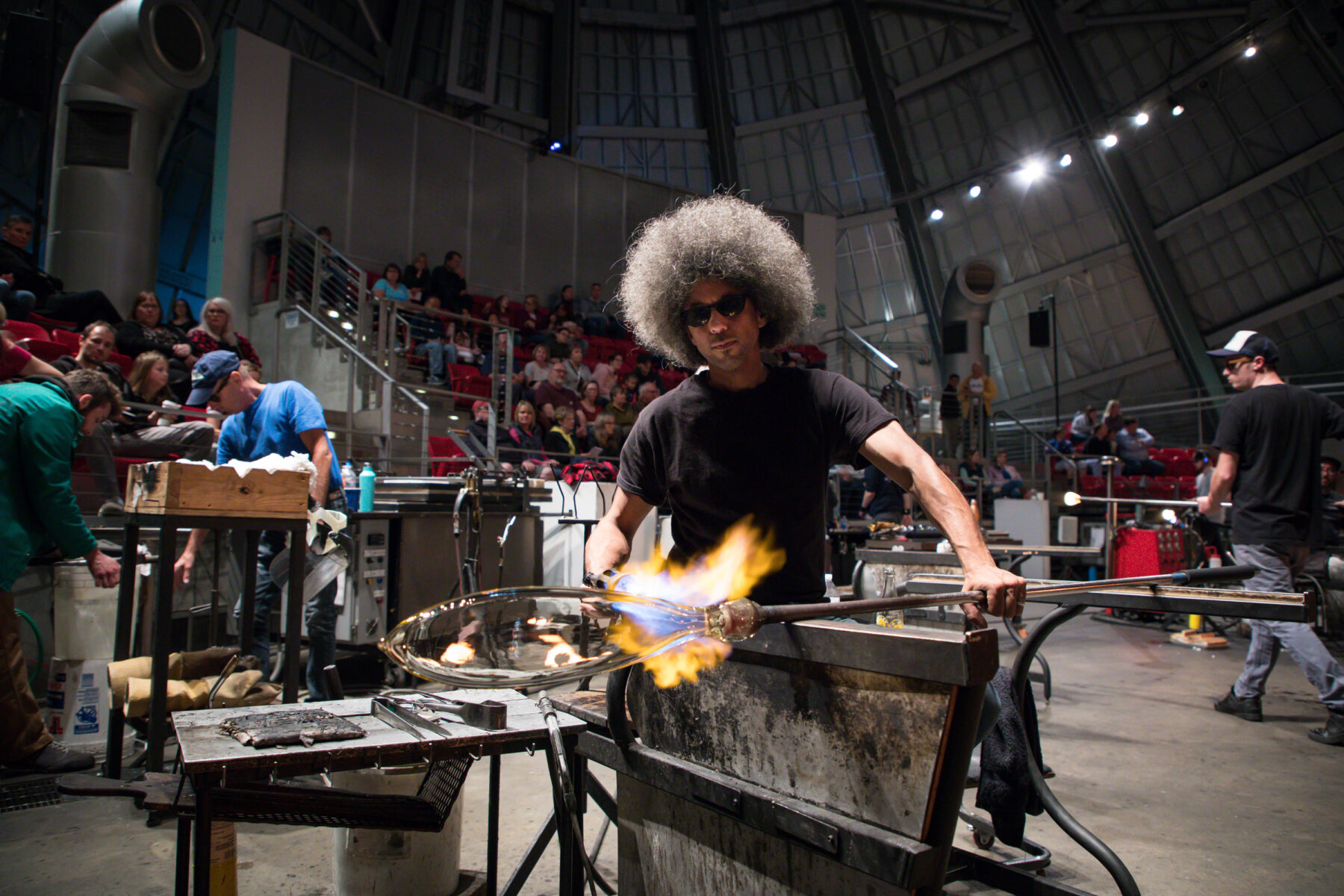Salmon need cold, clean water. Be bold for salmon.
Be bold on climate.
The Missing Salmon Alliance (MSA) leads a global coalition to bring the art installation Salmon School to the heart of the COP26 Summit in Glasgow.
The art installation, Salmon School, is a community engagement project by the internationally renowned artist Joseph Rossano. Salmon School takes to the global stage at COP26 to communicate the message that, with the twin crises of climate change and biodiversity loss, iconic wild salmon are on a path to extinction.
Salmon School brings together a community of artists, scientists, educators and environmental groups from all over the world, all contributing to the project’s artistic vision – salmon represent the global health of our rivers, oceans and ultimately our relationship with the natural world that sustains all human activity.
Alongside Salmon School, the Clyde River Foundation has worked with 26 primary schools along the length of the Clyde. They have learned about the remarkable story of the return of the salmon to the Clyde and contributed to our knowledge and understanding of these remarkable fish by collecting eDNA samples from the river. These will form part of a global database project being run by the Smithsonian Institution in Washington DC.
The installation, comprising of more than 300 salmon-like forms created from hand-blown molten glass, is a compelling tribute to a fish that holds great importance to Glasgow and is an indicator of the health of our rivers and oceans. Wild Atlantic salmon populations are in rapid decline; wild Atlantic salmon stocks have plummeted by 80% in 25 years, and if the current trend continues wild salmon will be extinct in many areas of the world within the next 30 years.

Speaking about the project, Joseph Rossano said “As wild salmon are threatened, so are we. It is a humbling experience to see SCHOOL featured in such a significant global setting, but the movement to save Atlantic and Pacific salmon is so much bigger than any single sculpture or event. SCHOOL is inspired by the plight of wild salmon and steelhead of the Upper Skagit River. It’s inspired by the cleanup and restoration of the River Clyde in Glasgow, where salmon have returned. And it’s inspired by similar people and communities everywhere who are facing climate change through the lens of salmon.”
He continues, “I think delegates at COP26 care about salmon because any pathogen that can impact salmon, any poison that can be dissolved in salt or freshwater that can impact them, impacts the food chain, impacts us. We’re learning that global climate change is a function of death by 1000 cuts. It’s common terminology in salmon conservation and it will become common terminology in human conservation too – so if there’s a canary in a coal mine it would be hard to argue that it isn’t the salmon.”
The giant salmon shoal, suspended in awe-inspiring formation, will coalesce at COP26 after collecting individual stories from a wide range of communities on how climate change has devastated this once prolific species. The installation also presents a beacon of hope because proven management strategies can turn the tide for a species with iconic status in cultures across our planet. The River Clyde is a resounding success story for salmon and local communities working together to save our salmon. Glasgow bears a salmon on its Coat of Arms and the installation will be a fitting tribute to a fish that has been instrumental in the city’s prosperity.
Salmon School directly addresses four goals of COP26:
- Carbon Net Zero – Cold, clean water is critical for wild salmon survival and is vanishing due to rising global temperatures, pollution, deforestation and damming – all caused by humans.
- Adapt to protect communities and natural habitat. Salmon communities have identified that large scale adaption measures are needed to help the survival of the species and themselves.
- Finance – Significant investment is needed and the financial model needs to change to ensure funding and investment is not destroying the very environments salmon and humans need to survive.
- Working together – The International organisations are collaborating for the first time to save our wild salmon
By placing wild salmon at the forefront of the climate change debate, the MSA hopes this will provide a range of measures that will reduce or eliminate the impact climate change is having. Displayed in a prominent position at COP26, the installation will connect delegates with specific initiatives around the world, educating young people, and energising leaders to take decisive action to save the salmon and prevent climate change.


